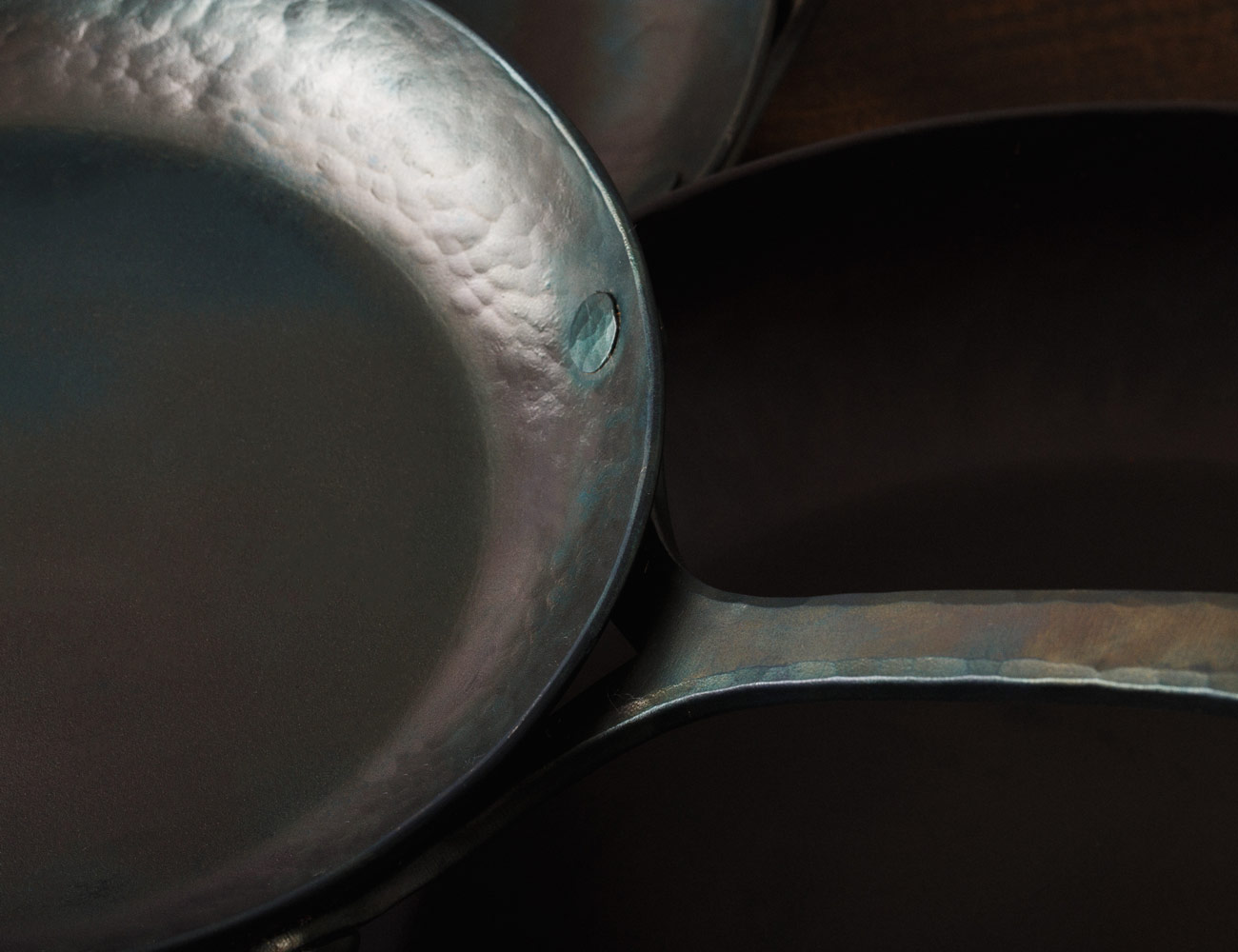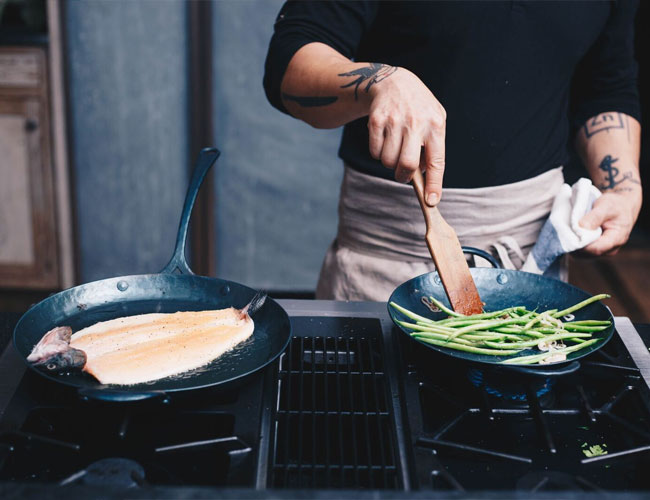In recent years, there’s been much ado about cast-iron cookware — and with good reason. It sears beautifully, lasts forever and makes for great Instagram posts.
All that said, cast-iron isn’t exactly unique in its attributes.
Carbon steel — popular in professional kitchens across the globe — accomplishes all of the above and then some. “With carbon steel, you have more flexibility,” says Keith Freeman, Business Manager at Blanc Creatives, an award-winning crafting studio handmaking premium carbon steel cookware. “It’s going to be lighter than cast-iron, the walls will be more sloped rather than straight up-and-down, it’s going to be closer to true non-stick and it’s much more durable.”
Those sloped walls, Freeman notes, help when sautéeing, tossing and flipping food (like eggs or pancakes), which is made a more manageable task by the lighter weight. Your typical cast-iron 10-inch skillet weighs anywhere from five to six pounds; a carbon steel pan of the same size, meanwhile, will likely be between three and four pounds. Because carbon steel pans are pressed from discs of perfectly flat and smooth steel, the pieces will naturally take on non-stick quality, but due to their rough surfaces, most mass-produced cast-iron skillets will not. Finally, there’s durability to consider: although cast-iron may seem tough, it’s brittle to the point that it can crack or break if dropped. Not true for carbon steel.

Blanc pieces — which start at $195 — are made with thicker steel than that found on restaurant-centric models, conferring the pieces with more staying power.
All this begs the question why this magical culinary wonder-tool hasn’t invaded all our kitchens, affording each of us high heat cooking and superior maneuverability. After all, you could make the argument that the carbon steel pan reigns supreme where cooking is taken most seriously: professional kitchens.
It’s all about what’s available, Freeman says.
“Frankly, there really hasn’t been many carbon steel pans made for consistent, prolonged home use,” Freeman says, positing a lack of quality products, which stems from the difficulty with producing large amounts of good products, is to blame. Restaurants often use cheap, thin-gauge carbon steel pans — such as those from De Buyer — that buckle and warp over time. Though such cookware is fine for occasional use in the domestic kitchen, Blanc pieces (which start at $195) are made with thicker steel (about 1/8-inch sheets), which confers the pieces with staying power inexpensive restaurant-centric models may not carry. They also sport elongated handles that aim to reduce heat levels when cooking.
Ultimately, what you cook with comes down to some combination of convenience, preference and price. But there is a reason those who cook for a living so often wield a carbon steel skillet: it’s lighter, it’s versatile and it’s durable as hell.
With cookware, function comes first. But quality craftsmanship can carry its own aesthetic weight, and Blanc Creatives is a testament to the beauty that stems from blending premium materials with thoughtful design. Read the Story


